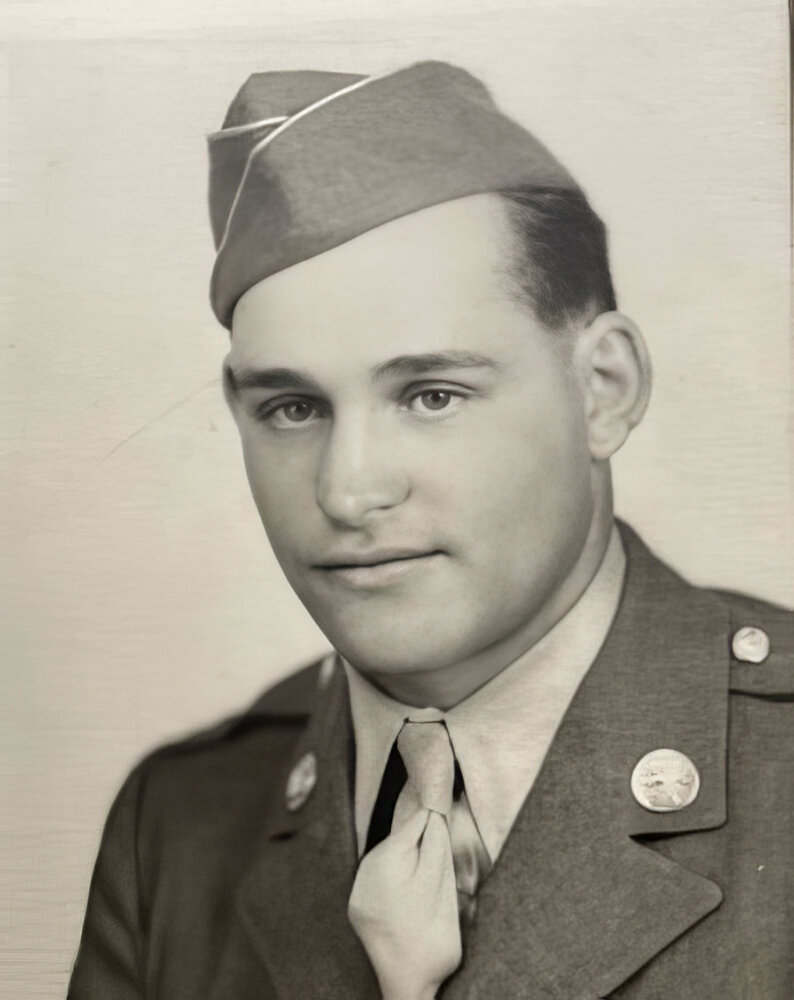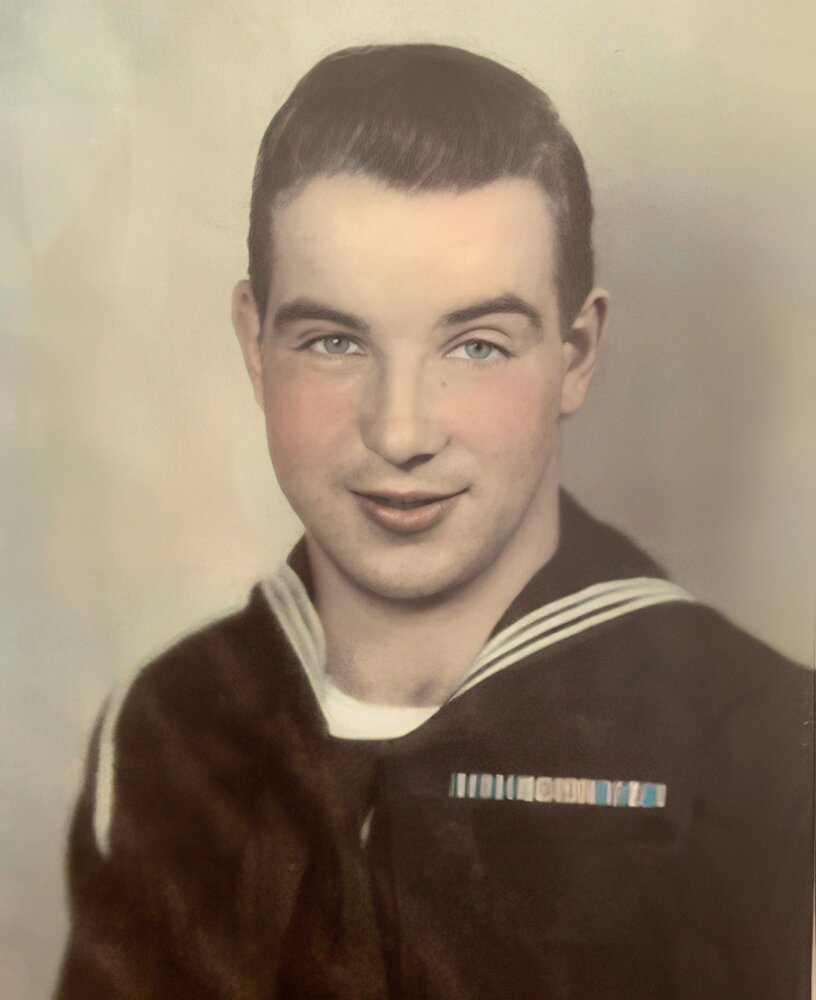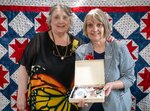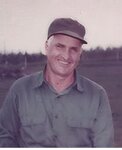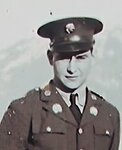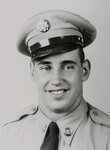Support the Timberjay by making a donation.
A hero among a family of heroes
Tower’s Trucano family has amazing legacy of service
TOWER—Family members of Eugene Trucano, of Tower, recently gathered with a host of family, friends, military Veterans and community members at a ceremony in Virginia to recognize Trucano for his participation in D-Day and four other major campaigns of World War II.
Attached to the 463rd Medical Collecting Company, Trucano’s journey took him from the beaches of Normandy all the way to the German homeland as he participated in critical battles to free France and bring the Nazi war machine to its knees. Trucano’s service was an enigma of sorts, a soldier dedicated to saving lives amidst the furious attempts of soldiers on both sides to take them.
The details of his service were certainly unique, but military service to the country was the norm for the family of his father, Charles Trucano, an Italian immigrant who came to the U.S. around the turn of the 19th century. According to records on Ancestry.com, Charles lived in Illinois and South Dakota, working as a miner before moving to Ely around 1908 – his first three children with wife Catherine Bracco were born in Ely. The Trucanos moved to the Tower area around 1915, where Charles went into farming, and they had 12 children together before Catherine died of pneumonia in 1934 at the age of 43.
Charles was prepared to serve in World War I, registering for the draft in September 1918, but was not called up for duty. His brother Eugene, who emigrated to the U.S. from Italy in 1914, became a naturalized U.S. citizen while at an Illinois Army training camp in 1918. His unit did go to war, and Eugene died in France in 1919.
All seven of the sons of Charles Trucano would sign up for military service, but among them Eugene’s service was the most extraordinary of them all.
Eugene Trucano
Eugene Trucano was just five days short of his 21st birthday when he signed up for the draft in February 1942. While it’s unclear how Trucano ended up as an ambulance driver and field medic in the 463rd Medical Collecting Company, on June 6, 1944, his company was on a ship anchored off Utah Beach on the coast of Normandy as Operation Overlord, the code name for D-Day, commenced.
Utah Beach invaders encountered the least resistance of any of the invasion forces – out of 23,000 men, only 197 were killed or wounded, according to Department of Defense records. Trucano’s unit was held in reserve at the start of the invasion, and by the time they came ashore on June 11 the beachfront fighting was over.
But light combat on the beach was immediately replaced by unexpectedly heavy resistance as the invasion force tried to gain ground beyond Utah Beach. German soldiers were hunkered down in hedgerow-topped earthen structures built by the region’s farmers, and the advancing Allied Forces were funneled into narrow columns that made them easier targets for enemy machine gun fire. Trucano’s ambulance would have been retrieving the wounded from the frontline aid stations in conditions made treacherous by the worst weather to hit Normandy in four decades.
After being stalled for weeks, the Allies launched the Northern France campaign. Overrunning the German lines, forces moved rapidly eastward, encountering mostly light skirmishes as they liberated villages and cities. Trucano would have been in the midst of both urban and rural combat as he carried out his duties. The Allies achieved their objective by September, and awaiting Trucano’s unit after that was the largest and bloodiest battle of the war, the Battle of the Bulge.
Beginning in December in the densely forested Ardennes region of Wallonia in Belgium, Luxembourg, and eastern France, the Battle of the Bulge started as a surprise German counteroffensive designed to split the Allied ranks, creating the “bulge” in the skirmish line from which the battle got its name. Conditions were beyond miserable with eight inches of snow on the ground and average temperatures of 20 degrees. Again, Trucano would have been in the thick of things, collecting wounded from infantry aid stations and moving them to intermediary collecting stations, then transporting those who needed more care to better equipped division clearing stations and field hospitals. At any moment, Trucano could be called on to use his skills as a medic to treat wounded soldiers, many who made it and many who did not.
In five weeks, the Allies turned back the German assault and brought an end to the last major Nazi offensive of the war. It was time to begin closing in on Germany, and Trucano would have a role in two more major campaigns that would hand victory in Europe to the Allies.
The first step was to establish a foothold inside of Germany, and they did so in the Rhineland campaign, which commenced in February 1945, a month after the Battle of the Bulge. Still facing harsh winter conditions, the Allies nonetheless were successful in pushing a depleted and demoralized German army back beyond the eastern banks of the Rhine River, claiming all of west-central Germany and part of Belgium. Once again Trucano would have seen a mix of urban and rural action as the Allies sought to conquer key industrial centers during the offensive.
With the Rhine secured by the end of March, the Allies were poised for the offensive that would end the war in Europe, dubbed the Central Europe campaign. Seizing the advantage, the Allies, with Trucano in support, transitioned quickly from the Rhineland offensive to the Central Europe campaign, taking Frankfurt, Nuremberg, Munich, Dresden and other major cities as they marched toward Berlin from the west while the Russians moved in on the east. While the Allies did not reach Berlin, the devastating offensive, combined with the Russian’s capture of Berlin, directly led to Germany’s unconditional surrender on May 8. His wartime exploits were now close to completion, and Trucano received an honorable discharge on Nov. 1, 1945.
D-Day ceremony
Eugene Trucano died in 1981, and like so many WWII Veterans he didn’t talk much at all about the war. His daughters, Andrea Alto and Linda Trucano only learned the extent of his service much later through some research, an investigation that also revealed Trucano was in line for numerous commendations and medals for his service.
“He wouldn’t talk about it,” said daughter Linda Trucano. “He might have to my mother, but I was just so young I wouldn’t have been in on it. All I remember is that it took a very long time for him to become whole. It was like months and years.My mom, Mary Trucano, was very strong – she kept him on his feet and kept him going.”
U.S. Eighth District Representative Pete Stauber’s office facilitated the necessary steps to get Trucano’s honors, and they were presented to his daughters at the June 6 D-Day ceremony at the Elks Club in Virginia.
Stauber addressed the gathering via recorded video, and field representative John Eloranta and veterans liaison Jacob Warkentin made the presentation of the medals and a flag flown over the U.S. Capitol. The sisters also received a handmade quilt from the Quilts of Valor organization.
Trucano’s honor
The awards Trucano received included the American Campaign medal, World War II Victory medal, the European-African-Middle Eastern Campaign medal, the Silver Star for participating in five major battles, the Driver and Medical Badge and Driver with Bar, the Good Conduct medal, and the Honorable Service lapel button for WWII.
“I’m so glad we got to recover these medals,” Andrea Alto said. “We never really knew about them. He was such a humble, unassuming man, very selfless and very compassionate. He would be very humbled and appreciative.”
Linda Trucano said that they decided to engage the public at the awards ceremony so that others could share in her father’s honors.
“There are a lot of people who do great things,” she said. “I’m so delighted that he was recognized because others will share in that. There’s a lot of people out there who will understand that.”
And among those who did great things were Trucano’s brothers. Six of Charles Trucano’s seven sons served in the military, four in WWII. The seventh, James, registered for the draft for WWII but was not called up. A brief summary of the family’s service beyond Eugene includes:
• Joseph Trucano – Joe was the first to serve in the military as a member of the U.S. 4th Cavalry from 1933 to 1938. That hitch took him to Alaska, where he met his wife and eventually settled for life. Joe was 26 and married when he registered for WWII but was not called to active duty.
• Charles Norman Trucano – Charles was 24 and working on his father’s farm when he registered in July 1941. He married his wife Mildred in 1943, apparently before being shipped overseas as an Army rifleman. He fought in the Rhineland and Central Europe campaigns, and was wounded in action, receiving a Purple Heart. He was discharged in 1945.
• Lawrence Trucano – Lawrence was a single lad of 19 working at the Minnesota Box Manufacturing Company in Tower when he registered in June 1942. He became an Army engineer who served in the South Pacific and saw action in the Philippines and New Guinea campaigns.
• Albert Trucano – Albert was just 18 when he registered in October 1943; and was a selective volunteer who served in the U.S. Navy. Like his brother Lawrence, he saw action in the South Pacific and participated in the Philippines campaign. He was awarded the Pacific Theater ribbon and was discharged in October 1945.
• John Trucano – John was just nine years old when President Franklin Roosevelt declared war in 1941, so he was not destined for WWII service. But when he was old enough, he, too, answered the nation’s call, serving in the Army during the Korean Conflict.
Also signing up for WWII service was 63-year-old patriarch Charles Trucano. He was part of what become known as the “old man’s draft.” These draftees were not actually liable for military service, but instead were seen to have useful skills to replace younger or more fit men who could then be conscripted to fight.
Alto said the awards ceremony was a chance to recognize not only her father’s service, but also the family’s entire legacy of military service, as well as that of their fellow soldiers.
“It’s made it deeper in a different sort of way,” Alto said. “This whole thing kind of comes to life even more. We need to honor this history. I’m just so very proud and honored.”



